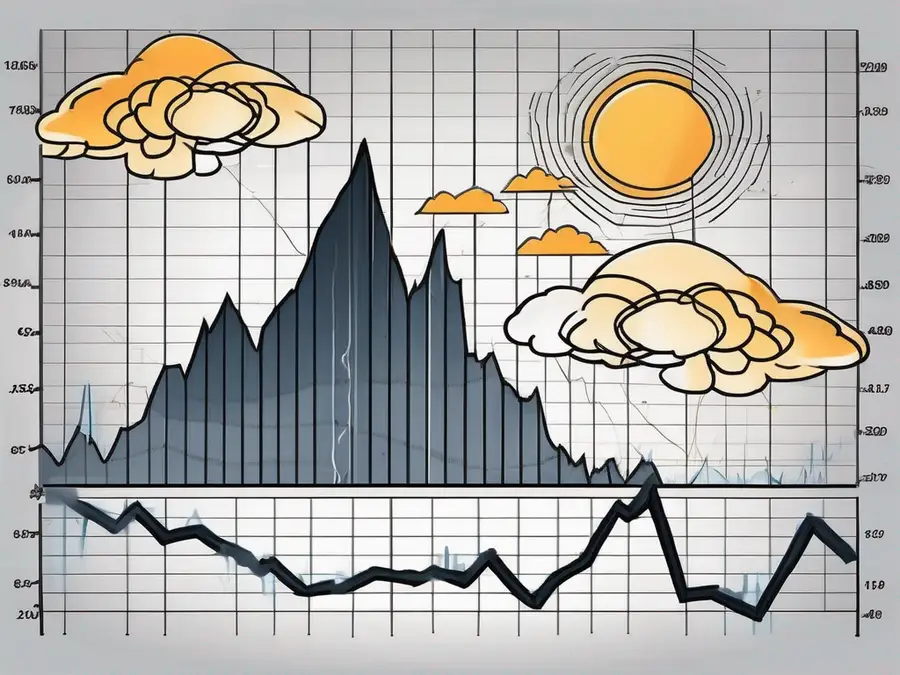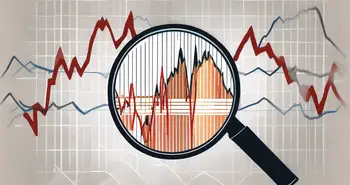Capitulation in Finance: What It Means and How to Spot a Market Bottom

As an investor, one of the most crucial concepts to grasp is that of capitulation. This term encapsulates a significant moment in market behavior, where investors, overwhelmed by fear and uncertainty, ultimately surrender to the prevailing market pressure. Understanding when and why capitulation happens can be crucial for making informed investment decisions.
Defining Capitulation in the Financial Market
Capitulation refers to the point in a market cycle when investors give up their positions and sell off their securities due to overwhelming pessimism. This action typically occurs after a prolonged market decline, causing a wave of selling across various asset classes. Often, capitulation results in panic-driven sell-offs, where investors believe that the only way to preserve their capital is to exit the market entirely.
This phenomenon can create a unique buying opportunity for seasoned investors, as capitulation can often indicate that the market is nearing a bottom. When the fear is at its peak, it’s common for asset prices to drop to levels that may not reflect their true intrinsic value.
The Psychology Behind Capitulation
The psychological aspect of capitulation is fascinating. During market downturns, anxiety and fear escalate within the investor community. As prices fall, the fear of a further decline intensifies, leading to a herd mentality. Investors often succumb to the ‘fight or flight' response, choosing to flee the market rather than face potential losses.
This collective panic serves to deepen the market downturn as many investors rush to sell. Understanding this psychological tendency can help investors better navigate their emotions during turbulent times and recognize when it might be advantageous to hold firm rather than capitulate.
Historical Context of Capitulation
Historically, capitulation has played a pivotal role in shaping market dynamics. Notable events like the dot-com bubble burst in the early 2000s and the global financial crisis of 2008 are prime examples. In both instances, widespread capitulation resulted in asset prices collapsing, ultimately leading to market bottoms and the subsequent recovery phases.
These historical instances provide context for today's investors. They serve as a reminder of the cyclical nature of markets—while capitulation can appear daunting, it is often a precursor to new opportunities in the following recovery period.
The Impact of Capitulation on Investors
Capitulation carries significant emotional and financial implications for investors. Understanding these impacts is vital for anyone navigating this complex environment.
Emotional Consequences of Capitulation
Emotionally, capitulation can be devastating for investors. The act of selling during a downturn can lead to regret and a feeling of loss, not only of capital but also of assurance and confidence. Many investors might question their strategies and judgment, resulting in a reluctance to re-enter the market even as conditions improve.
In my experience, one of the best approaches is to remain level-headed during these emotional times. I recall a period when I witnessed extreme market fluctuations. Rather than giving in to panic selling, I opted to analyze my positions and reassess my long-term strategy, which ultimately paid off as the market rebounded.
Financial Implications of Capitulation
Financially, capitulation has immediate consequences such as realized losses on investments. Those who sell at the capitulation point often miss out on significant gains when the market recovers. If one sells during the bottom of a downturn, they not only lose their money but also surrender the opportunity to capitalize on future growth.
Understanding that capitulation can signify a market bottom is crucial for shrewd investors. Developing a strategy that includes knowing when to stay the course or buy during these downturns can lead to lucrative opportunities.
Identifying Signs of Capitulation
Identifying the signs of capitulation can help investors position themselves advantageously. A few key indicators can signal an approaching capitulation.
Market Indicators of Capitulation
- High trading volumes—indicating panic selling.
- Significant drop in stock prices over a short period.
- Broad market declines across multiple sectors.
Monitoring such indicators can provide insight into market sentiment, helping to distinguish between healthy pullbacks and potential capitulation scenarios.
Behavioral Signs of Capitulation
- Increased media coverage focusing on pessimism.
- Widespread discussions about leaving the market for good.
- Selling pressure dominates buying interest significantly.
Recognizing these behavioral signs among investors can give astute investors a leg up, allowing them to act strategically rather than reactively.
Strategies to Handle Market Capitulation
Handling market capitulation effectively requires deliberate strategies tailored to individual risk profiles.
Risk Management During Capitulation
Implementing robust risk management practices is essential. This might involve setting predefined stop-loss orders, diversifying investments, or reallocating assets to reduce exposure during turbulent times. Maintaining an emergency fund can also provide psychological comfort, knowing that you have reserves in place.
In my own practice, adhering to a clear risk management strategy allowed me to navigate previous downturns without making rash decisions that resulted in regrettable losses.
Long-Term Investing and Capitulation
Having a long-term investment mindset can help mitigate the impact of capitulation. Understanding that markets are cyclical means having faith that downturns are temporary and that there will be opportunities to enter the market again at lower valuations. This mindset can foster patience and prevent hasty decisions that might lead to selling at the worst possible time.
The Role of Capitulation in Market Cycles
Capitulation is not just an isolated event; it plays a pivotal role in the broader market cycles.
Capitulation and Market Bottoms
Capitulation is often the last gasp of panic before the market shifts direction. History shows that market bottoms frequently occur shortly after capitulation events, paving the way for subsequent recoveries. Recognizing this pattern can empower investors to take calculated risks during these pivotal moments.
Capitulation in Bull and Bear Markets
The presence of capitulation can vary across bull and bear markets. In bear markets, capitulation often manifests more dramatically, whereas in bull markets, it can act as a periodic correction. Understanding the cyclical nature of capitulation will help investors make informed decisions based on the prevailing market environment.
FAQ
What is capitulation in investing?
Capitulation occurs when investors sell their positions in panic, leading to substantial market declines, often indicating a market bottom.
How can I identify capitulation?
Look for high trading volumes, significant price drops, and widespread pessimism among investors and the media.
What are the emotional effects of capitulation?
Panic selling can lead to feelings of regret, loss of confidence, and hesitance to re-enter the market during recovery.
What strategies can I use during capitulation?
Implement risk management tactics, maintain a long-term investment approach, and remain strategic rather than reactive.
By understanding capitulation and its implications, investors can equip themselves with the knowledge to navigate market fluctuations successfully and emerge stronger in their investment journey.
As you navigate the complexities of market capitulation, consider the advantages of trading with Morpher. With its innovative blockchain technology, Morpher.com offers a seamless trading experience across a multitude of asset classes without the burden of fees. Whether you're looking to invest fractionally, short sell during downturns, or leverage your trades for greater potential, Morpher provides the tools you need to act strategically in any market scenario. Embrace the future of investing with safety and control at your fingertips. Sign Up and Get Your Free Sign Up Bonus today, and transform the way you trade during the most volatile market conditions.

Disclaimer: All investments involve risk, and the past performance of a security, industry, sector, market, financial product, trading strategy, or individual’s trading does not guarantee future results or returns. Investors are fully responsible for any investment decisions they make. Such decisions should be based solely on an evaluation of their financial circumstances, investment objectives, risk tolerance, and liquidity needs. This post does not constitute investment advice.

Painless trading for everyone
Hundreds of markets all in one place - Apple, Bitcoin, Gold, Watches, NFTs, Sneakers and so much more.

Painless trading for everyone
Hundreds of markets all in one place - Apple, Bitcoin, Gold, Watches, NFTs, Sneakers and so much more.









